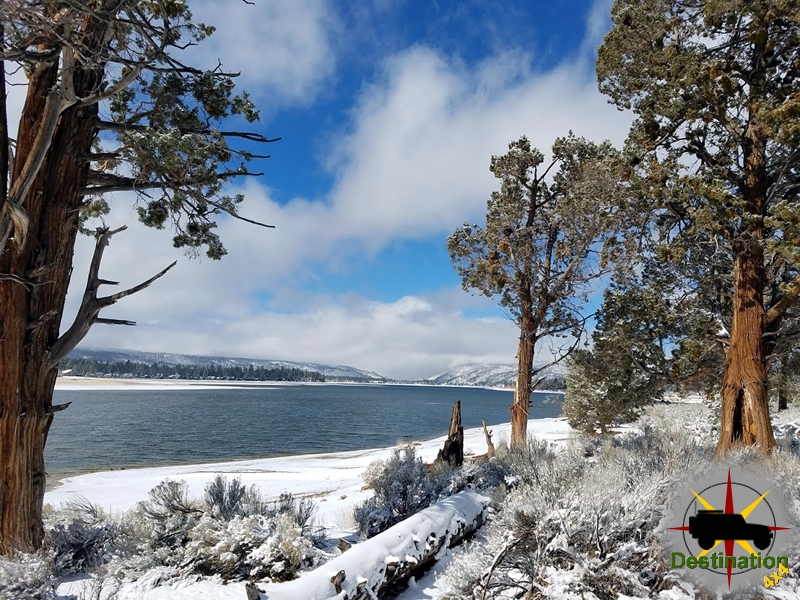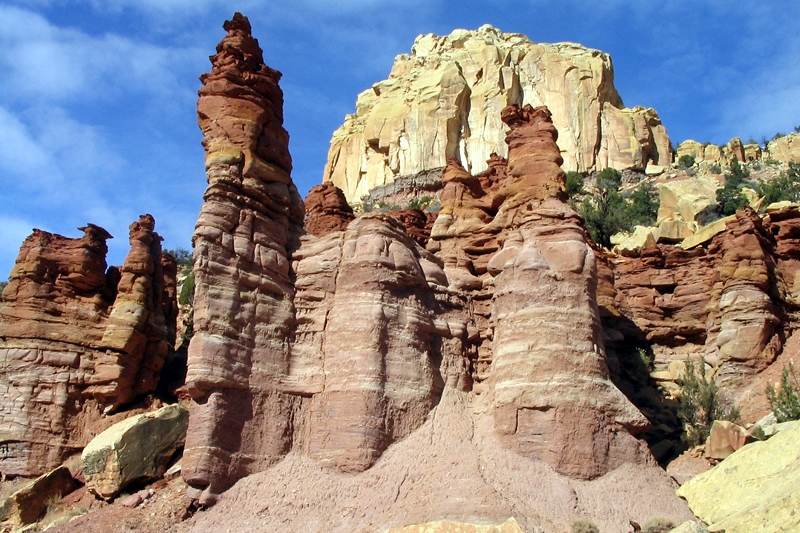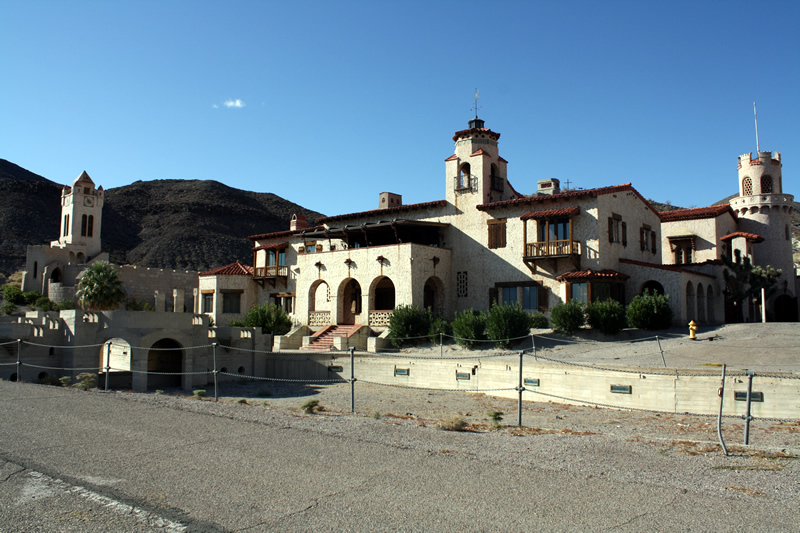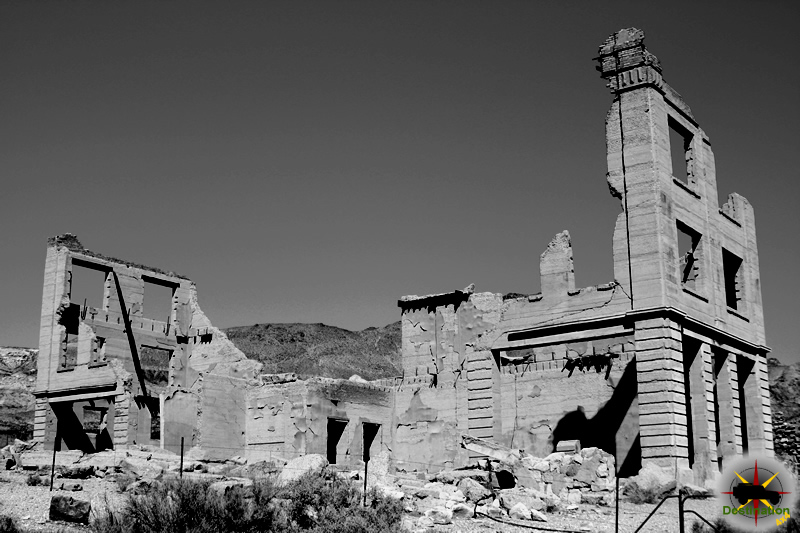
Holiday Campground
Nestled in the heart of the Eastern Sierra Nevada Mountains within the Inyo National Forest, Holiday Campground (often referred to locally as “Halliday” in some older maps and regional references, though officially listed as Holiday on Forest Service records) offers a serene and accessible escape just off U.S. Highway 395 near Tom’s Place, California. This campground serves primarily as an overflow facility for the popular Rock Creek area, making it an ideal spot for spontaneous campers or those seeking a quieter alternative when nearby sites like French Camp or Rock Creek Lake fill up quickly during peak summer months. Situated at an elevation of approximately 7,600 feet along Rock Creek Road (Forest Service Highway 12), it provides easy access to the cascading waters of Rock Creek, which originates in the nearby John Muir Wilderness, and stunning views of the surrounding pine-forested canyons and rugged peaks.
The campground spans about 5 acres of gently sloping terrain dotted with Jeffrey pines, aspens, and willows, creating a shaded, forested ambiance that feels worlds away from the highway bustle despite being only 0.5 miles from the Tom’s Place exit. It’s divided into two main loops: the upper loop with 20 single-family sites suited for tents or small RVs (up to 16 feet), and the lower overflow area with 15 additional sites that open as needed. Each site features a standard setup including a picnic table, fire ring with grate, and access to bear-proof food storage lockers—essential in black bear country. Drinking water is available via spigots throughout the loops, and there are four vault toilets strategically placed for convenience. Trash service is provided during the operational season, but campers are encouraged to pack out what they pack in to maintain the pristine environment.
As an overflow campground, Holiday’s availability is flexible: during high season (typically June to September), it’s first-come, first-served and may close if not needed, but it shines as a winter haven. From November through May, the water and trash services are shut down, eliminating fees entirely, and it becomes one of the few Rock Creek-area spots that remains accessible for hardy adventurers. Snow isn’t plowed, so winter visitors should come prepared with 4WD vehicles and self-contained setups for dispersed-style camping amid the snow-dusted pines. The site’s proximity to Tom’s Place Resort—just a short downhill drive—means you can stock up on groceries, firewood, or enjoy a meal at the historic cafe without venturing far.
Activities abound for nature enthusiasts. Rock Creek, running parallel to the campground, is a fly-fisher’s paradise stocked with rainbow and brown trout; bring your rod for easy creek-side casting right from camp. Hiking trails like the nearby Rock Creek Trail lead into the John Muir Wilderness, offering day trips to alpine lakes such as Heart Lake (about 4 miles in) or multi-day backpacking adventures toward the Sierra crest. In fall, the aspen groves explode in golden hues, rivaling New England’s autumn spectacle, while spring brings wild iris blooms in the adjacent meadows. Mountain biking and horseback riding are popular on the network of forest roads, and wildlife viewing includes mule deer, marmots, and occasional sightings of bald eagles overhead. For families, the site’s open spaces are perfect for stargazing or casual creek play, though the high elevation means chilly nights even in summer—pack layers.
Reservations aren’t accepted; it’s strictly first-come, first-served, with a $25 nightly fee in summer (waived in winter). The maximum stay is 14 days, and quiet hours are enforced from 10 PM to 6 AM. Cell service is spotty (Verizon fares best), with no Wi-Fi or hookups, embracing the true off-grid vibe. Accessibility is moderate: most sites are level enough for tents, but RVs should stick to designated spots to avoid tight turns on the gravel access road.
| Feature | Details |
|---|---|
| Number of Sites | 35 (20 standard, 15 overflow) |
| Site Type | Tent, small RV/trailer (up to 16 ft); no hookups |
| Amenities | Picnic tables, fire rings, bear lockers, vault toilets, drinking water (seasonal) |
| Fees | $25/night (summer); free (winter, no services) |
| Season | Year-round; full services June–September |
| Elevation | 7,600 ft |
| Access | Gravel road; 0.5 miles from Hwy 395; 4WD recommended in winter |
| Nearby Services | Tom’s Place Resort (groceries, showers, dining; 0.5 miles) |
| Activities | Fishing, hiking, wildlife viewing, mountain biking |
John Henry Cordes
John Henry Cordes (1853–1919) stands as a quintessential figure in the annals of Arizona’s territorial history—a German immigrant whose grit and vision transformed a remote stage stop into a enduring settlement amid the rugged Bradshaw Mountains. Born in Prussia on June 2, 1853, Cordes embodied the wave of European pioneers drawn to the American West by dreams of opportunity and reinvention. His life, spanning from the bustling ports of New York to the sun-baked trails of Yavapai County, wove together threads of mining, ranching, and frontier commerce, leaving an indelible mark on central Arizona. Through his establishment of Cordes and the Cordes Ranch, he not only facilitated the flow of people and goods across the territory but also laid the foundation for a family legacy that persists in the region’s landscape and lore.
Early Life and Immigration (1853–1875)
John Henry Cordes was born on June 2, 1853, in Prussia (modern-day Germany), during a period of political upheaval and economic strain that prompted waves of European emigration to the United States. Little is documented about his childhood or family origins, but like many young men of his era, Cordes sought opportunity across the Atlantic amid the promise of America’s expanding frontiers. He immigrated to the United States in his early twenties, settling initially in New York City, a bustling gateway for German immigrants. There, on an unspecified date in the mid-1870s, he met Elise “Lizzie” Schrimpf, another Prussian immigrant with whom he would forge a lifelong partnership.
In 1876, at the age of 23, Cordes formalized his commitment to his new homeland by becoming a naturalized U.S. citizen in New York, a rite of passage that symbolized his break from Old World ties and embrace of American possibility. Restless and drawn westward by tales of mineral riches and untamed lands, Cordes departed for Arizona Territory in 1875. His journey mirrored that of countless pioneers: a grueling trek by rail, steamer, and stagecoach through the Southwest’s harsh terrains, where Apache raids and lawless outposts tested the mettle of even the hardiest souls. Arriving in the Bradshaw Mountains—a jagged spine of quartzite and granite riddled with silver and gold veins—Cordes embodied the archetype of the European laborer turned prospector, his Teutonic precision ill-suited yet adaptable to the chaotic rhythm of the American West.
Arrival in Arizona: Labor, Marriage, and the Mining Frontier (1875–1883)
Cordes’s first foothold in Arizona was in Prescott, the territorial capital founded just a decade prior in 1864 as a bulwark against Native American resistance. Here, amid the ponderosa pines and bustling saloons of Whiskey Row, he took up manual labor, contributing to the construction of the Yavapai County Courthouse by crafting bricks from local clay—a foundational task that literally built the infrastructure of emerging Anglo settlement. Prescott in the 1870s was a microcosm of frontier flux: a mix of soldiers from Fort Whipple, miners from the nearby Walker district, and merchants hawking everything from Levi’s to laudanum. Cordes’s brick-making stint, though unglamorous, honed his entrepreneurial instincts and connected him to the territory’s mining elite.
By 1878, Cordes had ventured deeper into the Bradshaws, securing work at the Tip Top Mine near the ghost town of Gillett—a silver boomtown named for its superintendent, Dan B. Gillett, and plagued by Apache depredations that culminated in its abandonment in 1884. The Tip Top, one of the district’s richest strikes, yielded over $2 million in silver by the early 1880s, its ore processed at a bustling stamp mill where Cordes toiled on night shifts, tending machinery that pulverized rock into gleaming bullion. To supplement his wages, he moonlighted as a bartender at local saloons, navigating the rowdy milieu of Cornish miners, Mexican laborers, and claim-jumpers fueled by Agavero and tall tales of lost ledges.
It was in Gillett that Cordes’s personal life took root. In 1880, he married Lizzie Schrimpf in Prescott, a union arranged through transatlantic correspondence—Cordes had “sent for” her from New York, where she had immigrated separately. Lizzie, born Elise in Prussia, adopted her nickname upon arrival in Arizona, stepping off the stage from Maricopa Wells into the dust-choked heat of Phoenix before the arduous wagon ride north. Their first child, Charles Henry, arrived on February 11, 1882, amid the mill’s ceaseless clamor—a harbinger of the large family they would raise in the shadow of the Bradshaws. These early years tested the couple: Gillett’s isolation, coupled with the 1882 lynching of a local rancher by vigilantes, underscored the territory’s volatility, yet Cordes’s frugality—saving from double shifts—laid the groundwork for his next venture.
Founding Cordes: From Stage Stop to Community Anchor (1883–1900)
By 1883, with savings of $769.43 and a young family in tow, Cordes purchased Antelope Station, a modest adobe waystation along the Black Canyon Stage Route—a vital north-south artery connecting Prescott to Phoenix via the California and Arizona Stage Company. Situated in Steer Creek Canyon at the Agua Fria River’s watershed, the station—15 miles south of Mayer and 60 miles north of Phoenix—offered scant amenities: a single-room adobe, a corral for weary horses, and a well amid creosote and mesquite. Cordes transformed it into a thriving outpost, serving freighters hauling ore from the Bradshaws, prospectors bound for Poland Basin strikes, and ranchers driving cattle to market.
The Black Canyon Route, prior to the 1887 arrival of the Santa Fe, Prescott and Phoenix Railway, was Arizona’s busiest overland corridor, ferrying passengers, mail, and gold dust through Apache-haunted canyons. Cordes’s station became a nexus: he dispensed provisions, stabled teams of 20-mule hitches, and even moonlighted as an informal banker, safeguarding miners’ poke sacks against highwaymen. Lizzie managed the household with Teutonic efficiency, cooking sauerkraut suppers and birthing five more children—three daughters and two sons—while tending a burgeoning garden against the alkaline soil.
In 1886, seeking permanence, Cordes petitioned for a post office under “Antelope,” honoring the station’s name and the pronghorn that grazed the valley. Postal authorities, citing confusion with Antelope Valley near the Bradshaws, denied it; undeterred, he reapplied as “Cordes,” etching his name into Arizona’s gazetteer. The post office opened that year, cementing the settlement’s identity. By the late 1880s, mining booms in nearby districts—silver from Big Bug Creek, gold from Rich Hill—swelled traffic, turning Cordes into a supply depot where prospectors traded dust for beans and blasting powder. Cordes diversified into cattle ranching, his herds lowing across the mesa, while the family home expanded with frame additions, a testament to their growing prosperity.
Maturity and Expansion: Ranching, Family, and Frontier Resilience (1900–1919)
As the 20th century dawned, Cordes evolved from transient stop to rural hub. The arrival of the railroad in 1887 siphoned some stage traffic, but it bolstered mining: ore wagons rumbled to railheads at Agua Fria, and Cordes’s station adapted, shipping wool and hides southward. Son Charles, the eldest, assumed management by 1900, earning bookkeeping credentials before pivoting to sheepherding—a lucrative trade in Yavapai’s grassy valleys, peaking under the 1934 Taylor Grazing Act. John Henry, ever the patriarch, oversaw the general store—a treasure trove of calico, canned peaches, and Levi’s—while Lizzie wove the social fabric, hosting quilting bees and school lessons in their adobe.
The family’s resilience shone through adversity. Fires razed nearby Gillett in 1884, and droughts parched the ranges in the 1890s, yet Cordes endured. World War I brought bittersweet notes: son Fred served overseas, returning in 1919 just as influenza stalked the West. John Henry’s health, weathered by decades of desert toil, faltered that winter. After a brief illness—pneumonia, compounded by age—he succumbed on March 26, 1919, at 65, in Prescott’s Consolidated Hospital. His obituary in the Weekly Journal-Miner lauded him as “a fine type of gentleman, kind and considerate to all,” a pioneer whose “substantial interests” spanned over a third of a century. He was interred at Mountain View Cemetery in Prescott, his grave a quiet sentinel amid the pines.
Lizzie outlived him by decades, passing in 1944 as the post office shuttered, but not before seeing their progeny—six children, dozens of grandchildren—scatter across Arizona, from Mayer’s schools to Phoenix’s boardrooms. Grandson Henry E. Cordes carried the sheep legacy into the 1930s, appointed guardian of grazing lands by the Arizona Wool Growers’ Association.
Legacy: A Name Etched in Desert Stone
John Henry Cordes’s imprint on Arizona transcends biography; it is geography itself. The ghost town of Cordes, bypassed by Interstate 17 in the 1950s, endures as a cluster of ruins—a 1912 barn, a shuttered 1973 gas station, the family home—on private land where descendants still reside. Cordes Junction, Exit 262 on I-17, hums with truckers and tourists, a neon-lit echo of the stage stop’s heyday. Henry Cordes Park in Steer Creek Canyon honors grandson Henry, a nod to the family’s stewardship.
As a fourth-generation descendant, Kelly Cordes, noted in 2021, many kin became educators, shaping Prescott’s classrooms just as John Henry built its courthouse. Six generations later, the Cordes saga—from Prussian émigré to wool baron—embodies Arizona’s alchemy: turning immigrant grit into enduring legacy amid the saguaro and stone. In the Bradshaw’s whisper, John Henry Cordes remains the quiet architect of a corner of the West.
Grand Canyon Railroad
The Grand Canyon Railroad is a 64 miles railroad which connects Williams Arizona to the South Rim of the Grand Canyon. The original 64 mile route was built by the Atchison, Topeka and Santa Fe Railway company in order to construct and promote the Grand Canyon Village. The railroad was completed on September 17th, 1901. in 1901 a ticket could be purchase for the sum of $3.95.

The El Tovar Hotel is completed in Janurary, 1905. The hotel is constructed by the Santa Fe Railway to accommodate train passengers and uniquely located just 20 feet from the Canyon Rim. The initial success of this railroad is diminished with the widespread adaptation of the automobile and the highway system. Passenger Service is halted in July 1968 and later freight service is halted in 1974.
In 1988, the line is purchased by Max and Thelma Biegert, who restored the railroad and started operations in 1989. The Biegerts made their fortune in Nevada, operated the line until 2006 when the railroad was again sold to Xanterra Travel Collection. Today, the railroad offers both diesel and steam engine service and operates as a Heritage Railway and gives the passenger a brief means of enjoying a by gone era.
The Polar Express
Every winter, following the release of the Christmas classic movie the Polar Express, the Grand Canyon Railway’s offers a special train serice, the Polar Express. The Polar Express is a 90 minute journey from the nighttime wilderness of Williams, Arizona, to “the North Pole”. During the journey, passengers are encouraged to sing and treated with hot chocolate and a reindeer bell.

Grand Canyon Railroad Map
Grand Canyon Railroad Summary
| Name | Grand Canyon Railroad |
| Location | Coconino County, Arizona Grand Canyon National Park |
| Years of Operation | September 17th, 1901 – Current |
| Gauge | Standard Gauge – 4 feet 8.5 inches (1,435 mm) |
| National Register of Historic Places | 00000319 |
References
Bodie and Benton Railway
The Bodie and Benton Railway operated for about thirty eights years, supplying the town of Bodie, California. The narrow gauge railroad travelled north, from the forests south of Lake Mead up to the townsite of Bodie.

The Bodie Railway and Lumber Company was founded on February 19th, 1881. The business plan called for supplying the town is lumber for building and firewood for heat against the harsh high altitude winters. Steam Engines, which powered the town, also burnt this valuable supply of fuel.
The lumber was collected from the Inyo National Forest south of Mono Lake. At the Mono Mills, the lumber is loaded onto flat cars before being hauled up to Bodie and Warm Springs and Lime Kiln. The Mono Mills are capable of processing 80,000 board-feet of lumber in every 10 hours of operation.

The thirty one mile route up to Bodie also featured a two thousand foot elevation gain. The allow the rail to climb this grade, two switch backs are included in the route. The Bodie and Benton Railway is closed on September 7th, 1918. The need for a ready supply of fuel is diminished the a Hydroelectric Power Plant is constructed in Green Creek. The rail is abandoned and sold for scrap.
Today, there is little evidence of the railroad. An abandoned railcar was discovered and is now on display at the June Lake Marina.

Bodie and Benton Railway Map
Bodie and Benton Railway Summary
| Name | Bodie and Benton Railway |
| Also Known As | Mono Railway |
| Location | Mono County, California |
| Length | 31 miles |
| Gage | Narrow Gauge – 3 feet (914 mm) |
| Operations | February 19th, 1881 – September 7th, 1918 |
References
Old Spanish Trail (Garces Expedition)
Old Spanish Trail (Garces Expedition) is a Nevada State Historic Marker Number 140 located in Clark County, Nevada. This marker is one of several which tell the history of the Old Spanish Trail in Nevada.
The Old Spanish Trail is a 700 mile long historical trade route that connected the northern New Mexico settlements near Santa Fe, New Mexico with those of Los Angeles, California. The trail’s rugged terrain discouraged the use of wagons. It was always a pack route, mainly used by men and mules.
The routes and trails link California, Nevada, Arizona, Utah and Colorado. The Old Spanish Trail consists of a series and different trails and routes some of which are in service today.

Nevada State Historical Markers identify significant places of interest in Nevada’s history. The Nevada State Legislature started the program in 1967 to bring the state’s heritage to the public’s attention with on-site markers. These roadside markers bring attention to the places, people, and events that make up Nevada’s heritage. They are as diverse as the counties they are located within and range from the typical mining boom and bust town to the largest and most accessible petroglyph sites in Northern Nevada Budget cuts to the program caused the program to become dormant in 2009. Many of the markers are lost or damaged
Nevada State Historic Marker 140 Text
Seeking to open a land route between the missions of Sonora and California, Fray Francisco Hermenegildo Garcés, OFM, a Franciscan missionary priest and explorer, was the first European to enter the present boundaries of Nevada. He departed mission San Xavier Del Bac near Tucson in October of 1775, and by late February of 1776, the Spanish Franciscan friar had reached the Mohave villages located just south of this location on the banks of the Colorado river. Garcés was now traveling in areas never before seen by a non-native American.
Relying on Native American guides, he walked from village to village. The Mohave agreed to lead him to the pacific coast along a route used for trade purposes. It was from this general location, on March 4, 1776, accompanied by four natives, that Garcés left the banks of the Colorado and set out across the Mojave Desert; he reached Mission San Gabriel Arcángel 20 days later. Upon his return, he again visited the Mohave villages in this vicinity in May of 1776. His route followed a much older prehistoric trail used to bring shells and other trade goods to the tribes of the desert and mountain west. On July 19, 1781, in a Quechan revolt against Spanish forces, Father Garcés was killed at La Purisima Concepción Mission near the Yuma crossing. Padre Garcés’ body was later interred in the Franciscan church of the Colegio De La Santa Cruz, Querétaro, Mexico.
“Greater love hath no man than this – that a man lay down his life for his friends.”
Excerpts from Father Garcés’ diary
“I proceeded three leagues on the course northwest with some turns to the west-northwest. I observed this locality to be in 35° 01′, and I named it San Pedro De Los Jamajabs. In this situation and that below there are good mesas for the foundation of missions, and though they are near the river, they are free from inundation”.
Father Garcés’ Entrance into Nevada (March 3, 1776)
“March 4, on which was made the observation noted on the 3rd day. I departed, accompanied by three Jamajab Indians and by Sevastian, on a course southwest, and at two leagues and a half arrived at some wells [which I named Pozos De San Casimiro]. There is some grass”.
Father Garcés’ Departure from Nevada (March 4, 1776)
STATE HISTORICAL MARKER NO. 140
STATE HISTORIC PRESERVATION OFFICE
SAINT THOMAS MORE SOCIETY OF NEVADA
Nevada State Historic Marker 140 Trail Map
Nevada State Historic Marker 140 Summary
| Name | Old Spanish Trail (Garces Expedition) |
| Location | Clark County, Nevada |
| Latitude, Longitude | 35.0975, -114.6495 |
| Nevada Stage Historic Marker | 140 |



